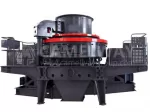Whether the concrete is mixed onsite or in a ready-mixed concrete operation, materials should be batched within the following limits:
Cement +1 percent
Added water +1 percent
Fine and coarse aggregate +2 percent
Admixtures and pigments +3 percent
Except for site mixing on small jobs, cement should be weighed on a scale separate from that used for weighing aggregates. If the ingredients are in bags, no fractional bags should be used.

Aggregate should be batched by weight. Batching by volume should not be permitted, except with volumetric batching and continuous-mixing equipment. Batch weight should be adjusted to compensate for absorption and surface moisture. When the mixture contains special aggregates, particular care should be exercised to prevent segregation or contamination.
Water can be batched by weight or volume. The measuring device used should have readily adjustable positive cutoff and provision for calibration.
Accurate batching of admixtures and colored pigments is critical, since they are used in relatively small quantities. Admixtures should be accurately batched at the batch plant. Admixtures that are designed to be added to the concrete at the site should be incorporated in accordance with the manufacturer's recommendations. When more than one admixture is batched, each should be batched separately and in such a way that the concentrated admixtures do not come into contact with each other. Attention should be paid to avoid freezing of admixtures in cold weather, as this can damage some of them. It is preferable to purchase pigments or colored admixtures prepackaged in batch-sized quantities. Powdered admixtures should be batched by weight, and paste or liquid admixtures by weight or volume. The volume of admixture batched should not be controlled by timing devices. Liquid admixtures are preferred but can require agitation to prevent the settling of solids.













0 Comment